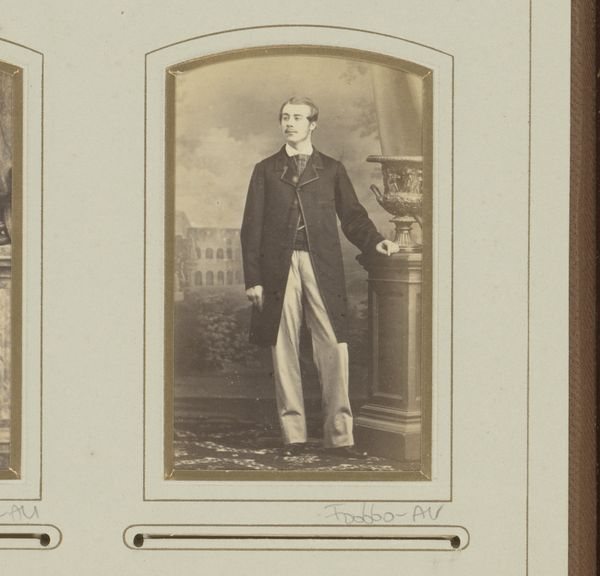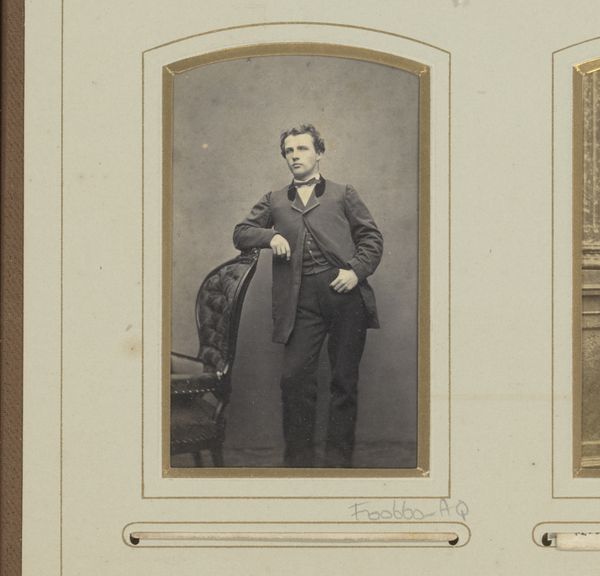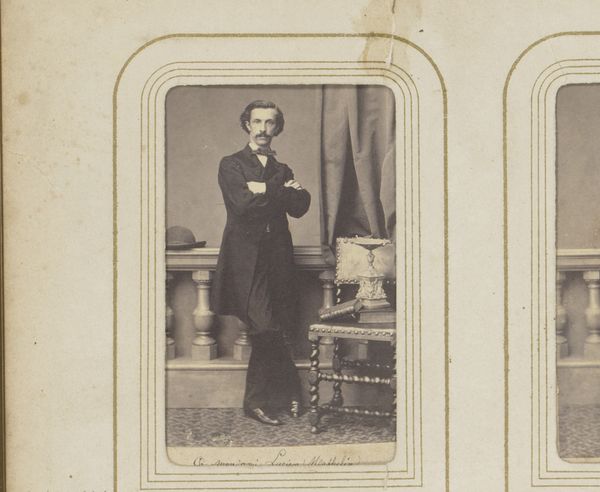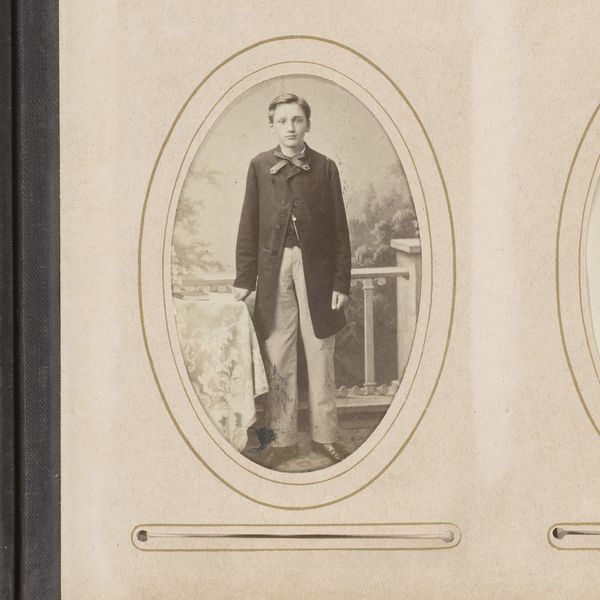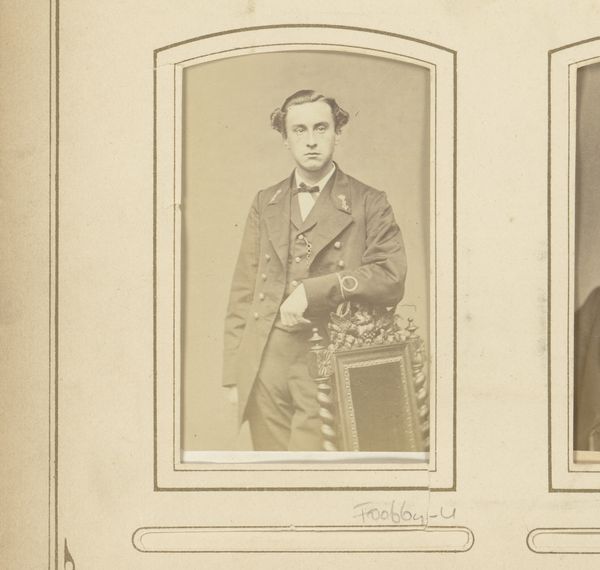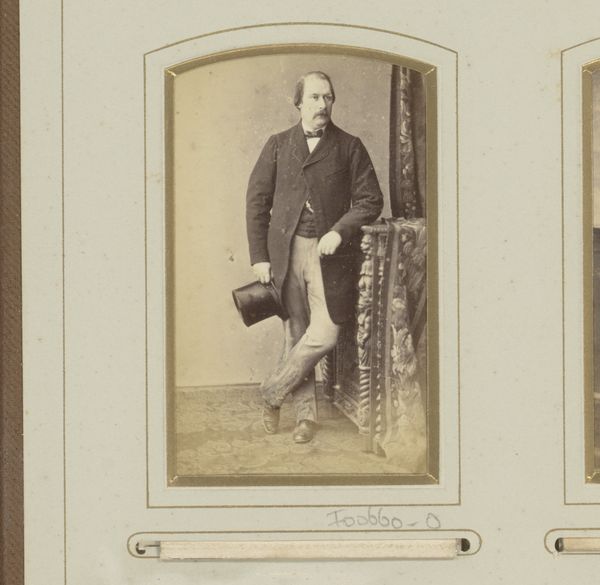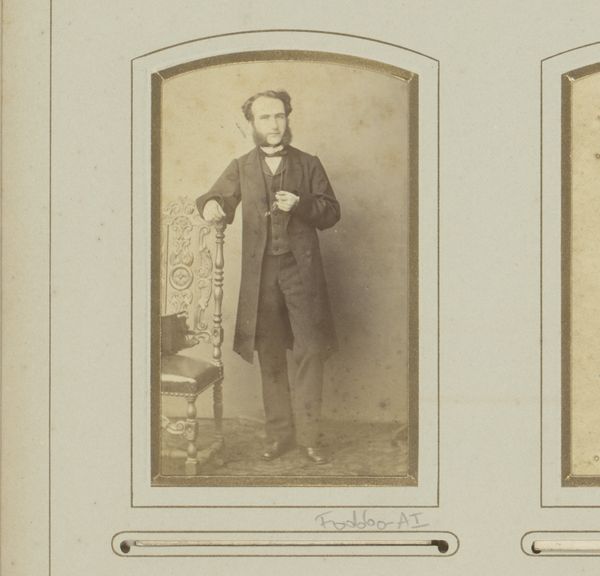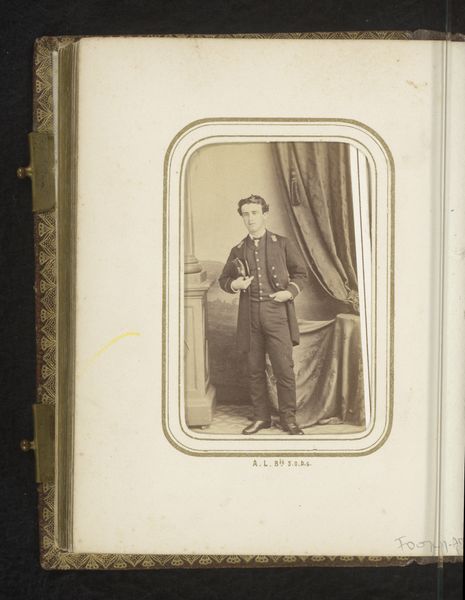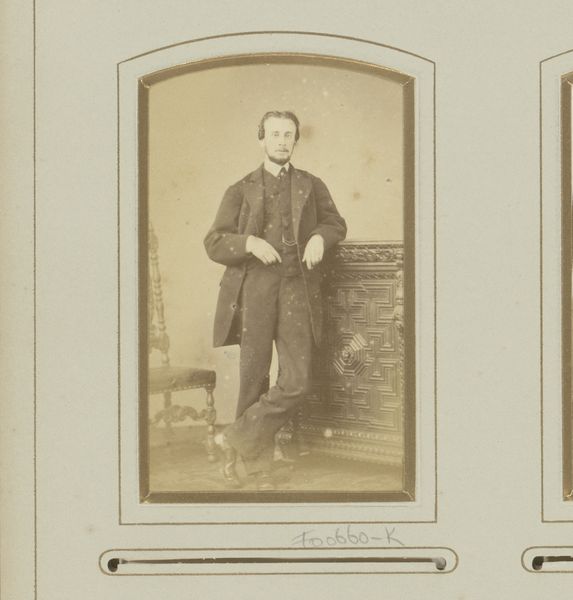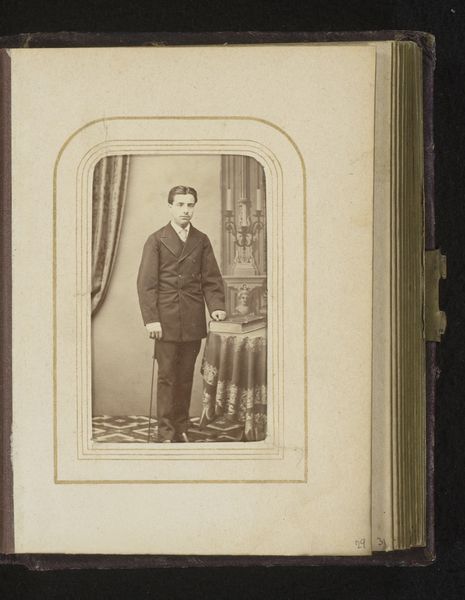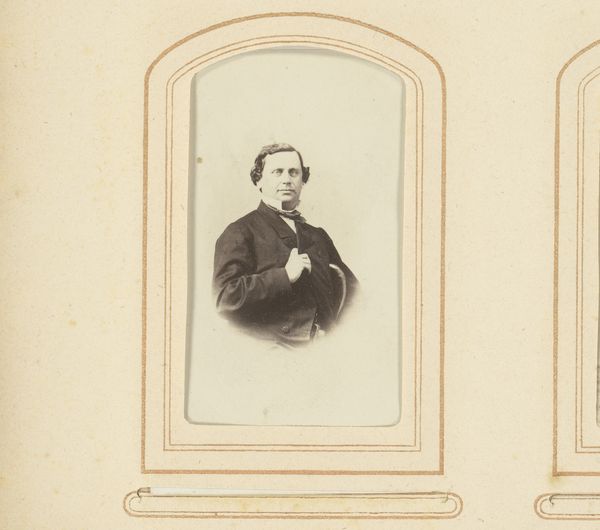
photography
#
portrait
#
photography
#
genre-painting
#
realism
Dimensions: height 84 mm, width 51 mm
Copyright: Rijks Museum: Open Domain
Curator: Before us is an albumen print dating between 1853 and 1880, titled "Portret van een staande man met jas en hoed in de hand"—or "Portrait of a Standing Man with Coat and Hat in Hand," attributed to Joseph Dupont. It's quite the study of early photographic portraiture. What are your initial thoughts? Editor: Well, beyond the stiff formality typical of the era, what strikes me is the backdrop – an artificial, painted garden scene. It speaks volumes about constructed identity, of aspiration projected onto a rather flat, two-dimensional reality. Curator: Precisely. Consider the laborious process involved in creating such an image. Each print required careful preparation, chemical baths, precise timing…The very act of posing, the stillness required, contributed to this atmosphere. Editor: And see how carefully the subject is styled— the clothing, the pose, even the little sculpture placed in the backdrop all work together. He wants to associate with a specific notion of cultured masculine gentility; the props help create the message of status. The hat itself has obvious, and very deliberate, visual and societal significance. Curator: And Dupont's photographic studio would have been deeply involved in all stages of that creation process. Consider how light behaves, its distribution in different textures and shades of material - fabric, paint. The chemicals alone have a story to tell! Editor: The staging feels deliberately classical – pillars, garden statuary. These references were very specifically chosen by those early clients because they would communicate refinement, prestige. What is he aspiring to communicate, in his stiff but confident posture? Curator: I find it fascinating how these early photographic portraits began mirroring painting traditions, aiming for similar levels of artistic merit. It shows a desire to validate photography as a serious art form. Editor: It also indicates just how powerful, immediately, images became, for controlling perception and self-expression. That power endures and multiplies today in all kinds of visual language. I suspect he knew exactly the persona he sought to convey. Curator: Thinking of the production itself versus considering just its iconic meanings…both are informative of a historical period now long gone! Editor: Exactly. That's why a symbol is nothing without a real thing.
Comments
No comments
Be the first to comment and join the conversation on the ultimate creative platform.
